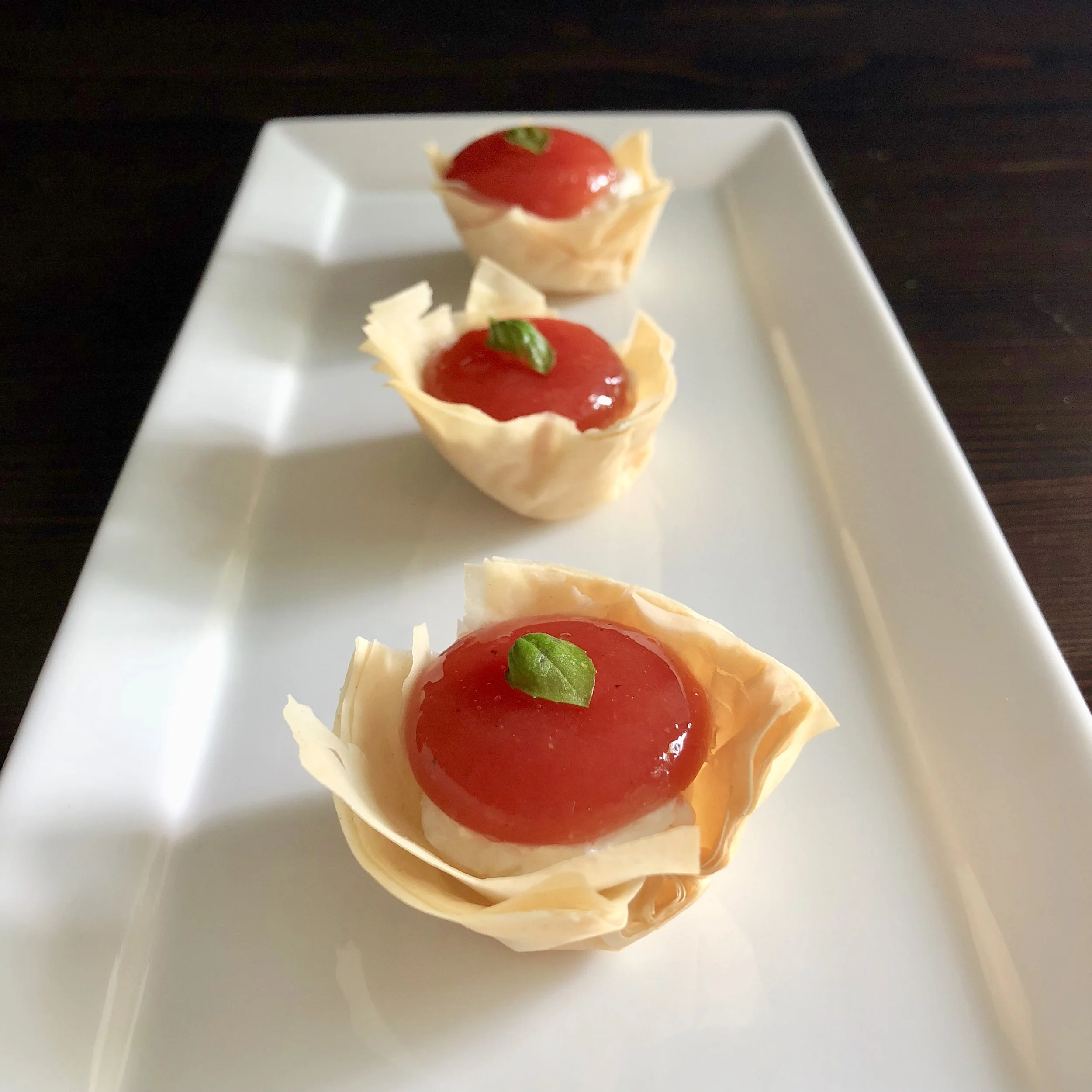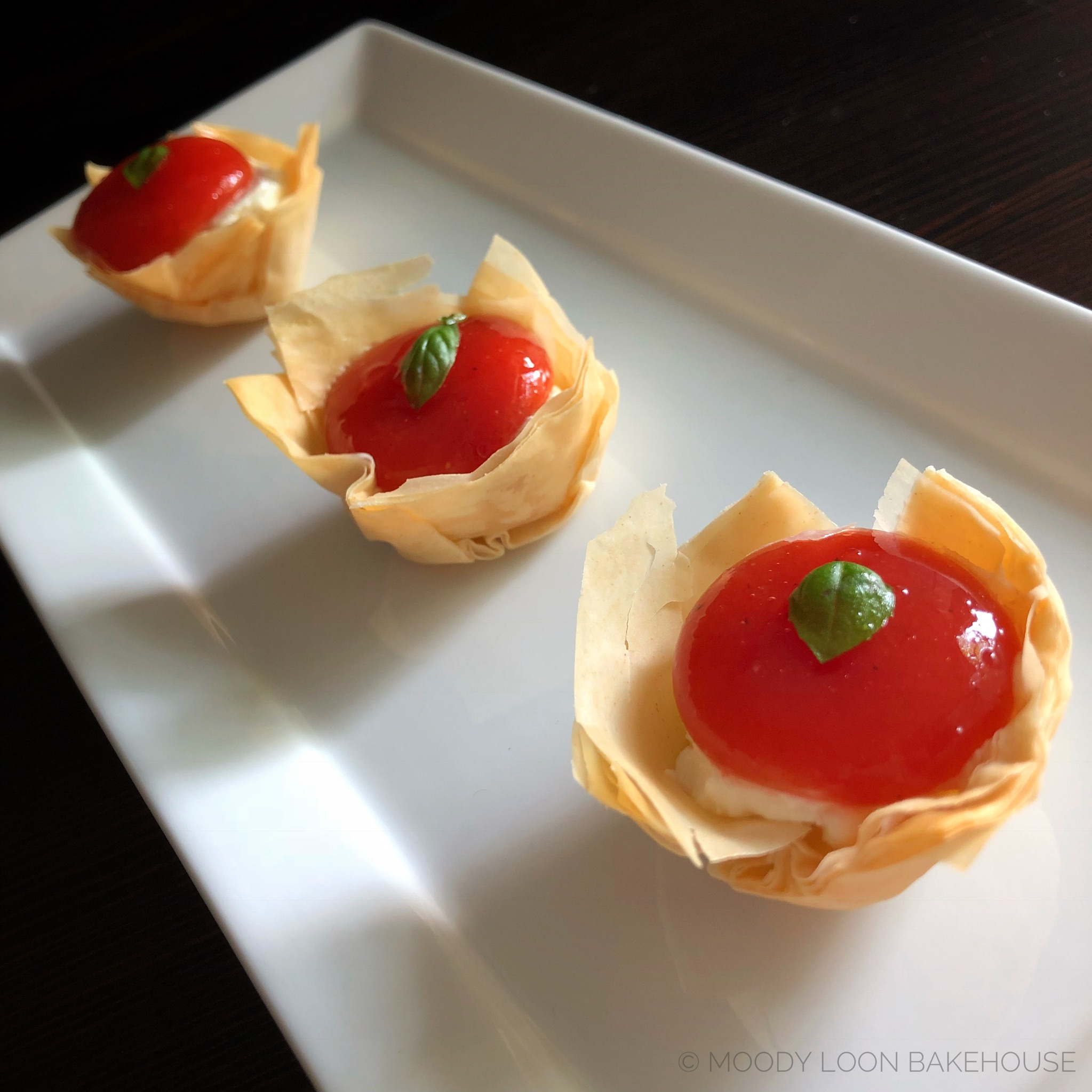tomato juice spheres
Oh y'all... it's time again for another Instagram ingredient collaboration! This round features tomatoes in all their glory, and I decided to get a little crazy with it this time and venture into the world of molecular gastronomy. I know it's not popular with everyone, and there will always be purists, but I love learning new techniques and discovering new sensory experiences. Molecular gastronomy ticks both those boxes, so I figured why not try it in my own kitchen?! As always, many thanks to Square Meal Round Table and What's Annie Eating for organizing this fun collab. Be sure to check out the other recipes at #wesaytomatoes on Instagram.
For this project, I used the technique called spherification which is liquid encapsulated inside a thin gel membrane that dissolves when you put it in your mouth. With this particular amuse bouche that I concocted, you pop the whole thing in your mouth and the tomato juice immediately bursts in your mouth. It's a fun little sensory experience to combine it with the creamy goat cheese and crispy fillo shell. There are lots of sites that discuss the spherification process in detail, like here, here, and here. But the gist of the process is:
Spherification: mixing sodium alginate into the liquid to be spherized, then dropping it in small quantities (with a pipette or eyedropper) into a calcium gluconate or calcium lactate bath.
Reverse spherification: mixing calcium gluconate or calcium lactate into the liquid to be spherized (can use a larger quantity), freezing it in a mold, then dunking the frozen mixture into a sodium alginate bath.
When the calcium and sodium mixtures interface, they create a gel membrane that traps the liquid inside. I recommend doing a little homework and reading about the process before diving in. There are important tips and tricks to follow to ensure success, but those are readily available online at the links above or in the kits listed below.
Spherification isn't hard, but you need the right tools. Turns out my mom had gotten me a spherification kit for Christmas a while back, but I hadn't really explored the topic until now. (Moms really do know best). This is the Molecule-R kit I used that had all the non-traditional items needed for spherification, including the chemicals needed, pipettes, a slotted spoon, and a silicone half-sphere mold and instructions. I also highly recommend Molecule-R's book that explains the process in detail and has recipes. Their more complete molecular gastronomy kit has more toys and options for other techniques.
Other tools that were helpful in getting the job done are:
A food mill. I used it to separate the fibrous parts of the veggies from the juice.
A regular or immersion blender
A mini muffin tin (I love this one)
A high-precision scale would be ideal. I don't have one, so I used the known weight of the kit packets to help me estimate the amount needed, but I will be investing in one of these little scales.
Tomato juice spheres on goat cheese + fillo
Makes about 18 bite-size servings
Ingredients
Tomato juice
2 large tomatoes, cored and chopped
2 celery stalks, diced
1 small onion, diced (about 1/2 cup)
1 Tablespoon sugar
1 teaspoon salt
1/4 teaspoon pepper
The weird stuff
2g calcium lactate (1/2 packet from the kit; use about 2g per 100mL or 3 3/8 fluid oz)
2g sodium alginate (1 packet from the kit)
A gallon of distilled water
The rest
A few ounces of goat cheese
Frozen pre-made fillo dough (1 box is more than enough) - thaw one roll in the fridge overnight
2 Tablespoons melted butter
Tiny basil leaves for garnish
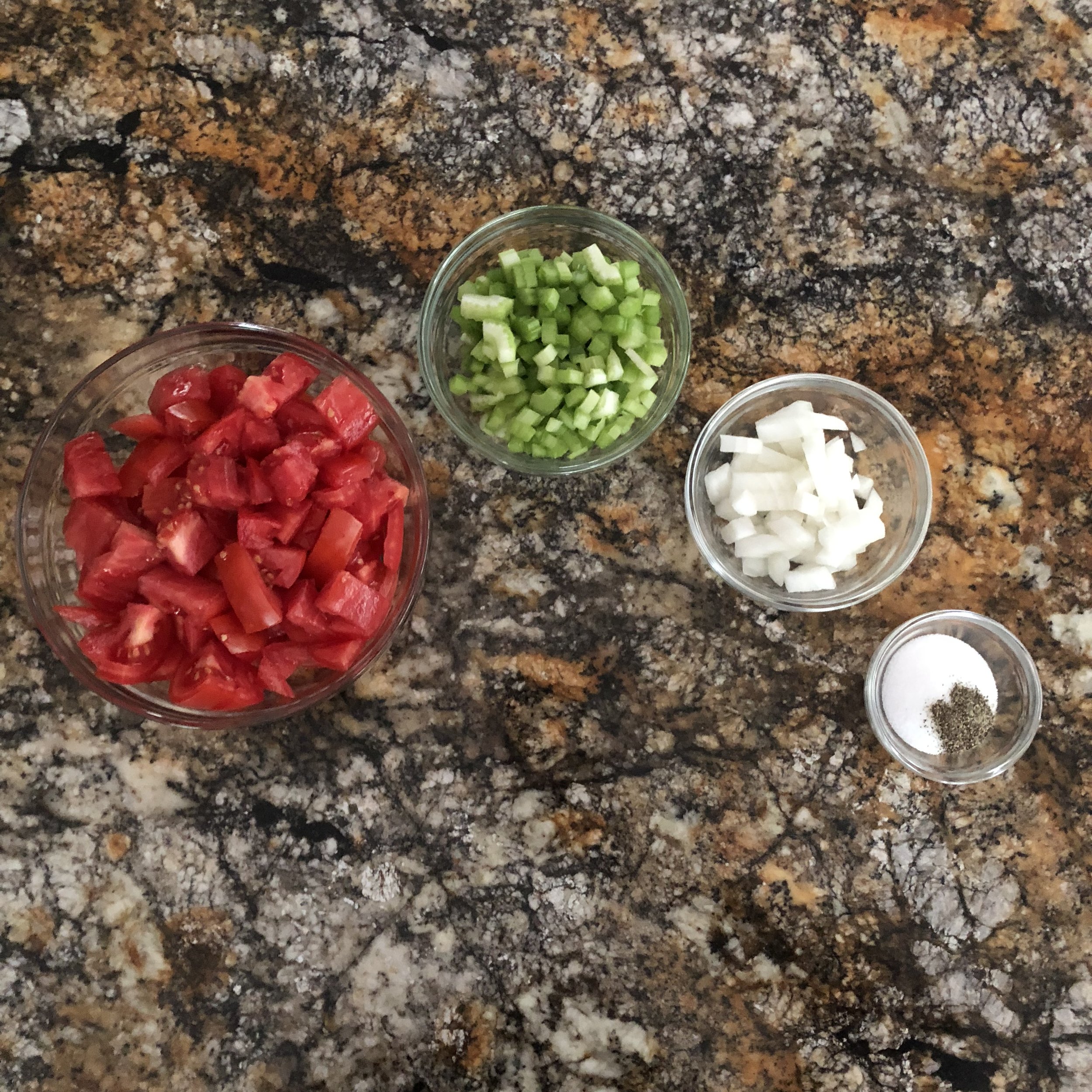
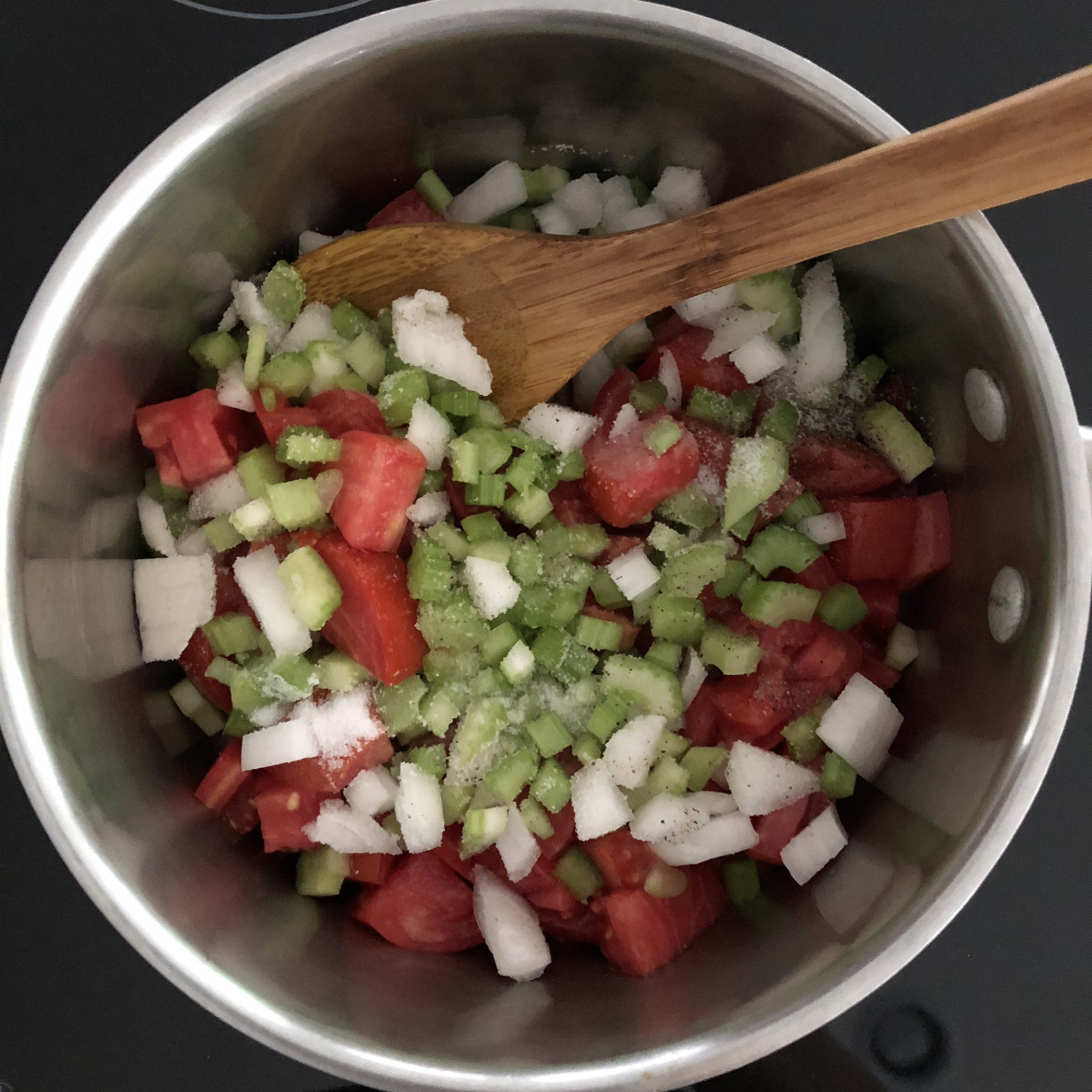

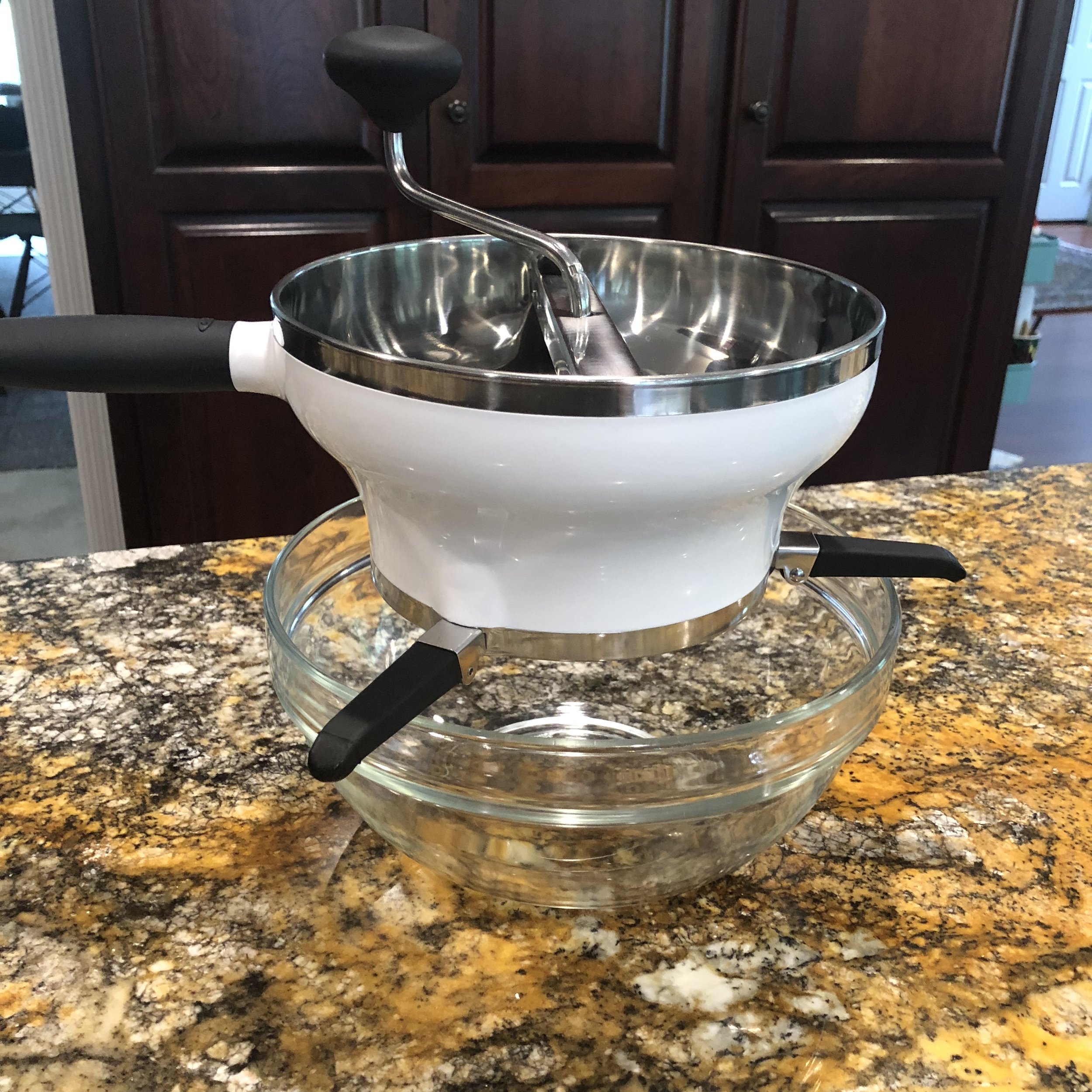
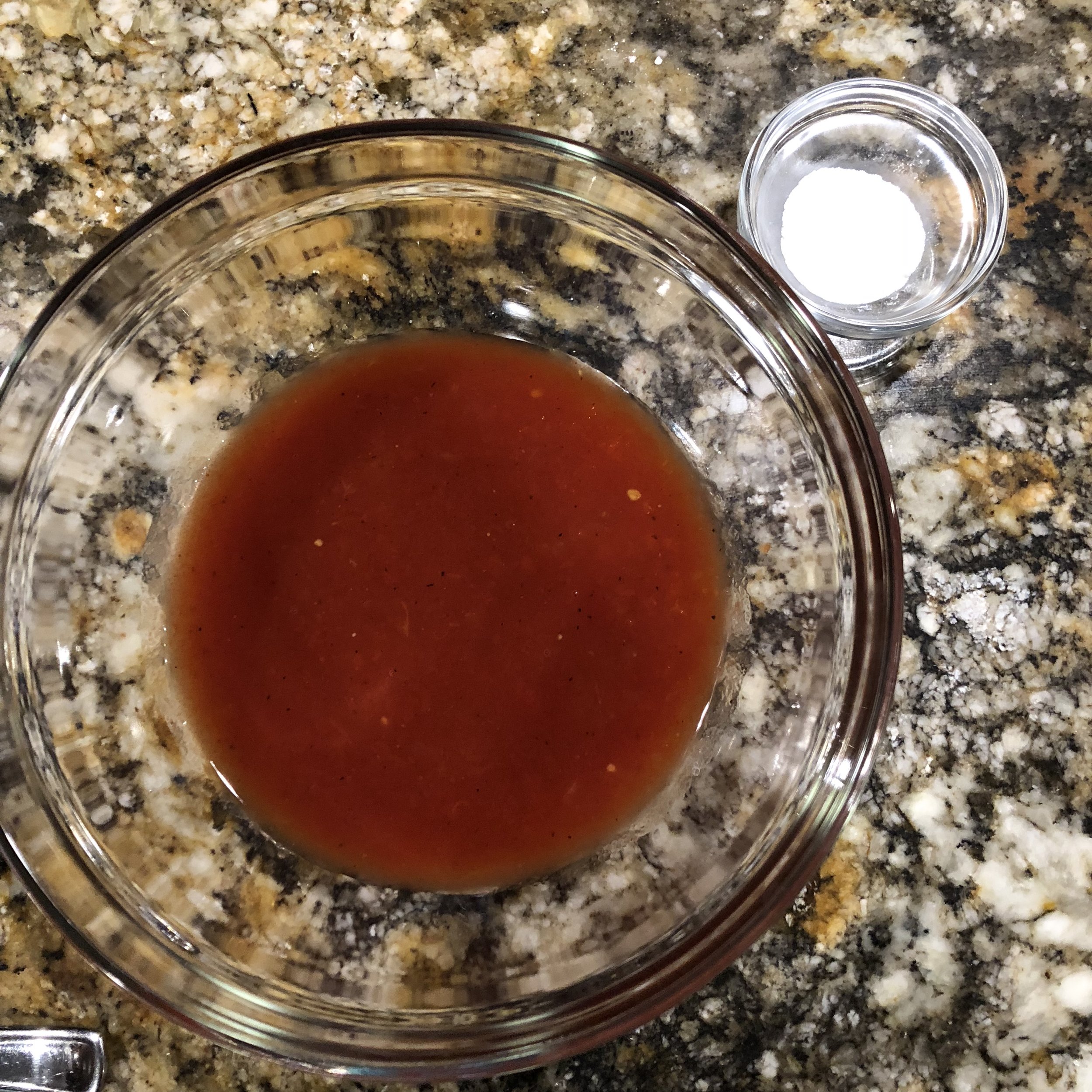
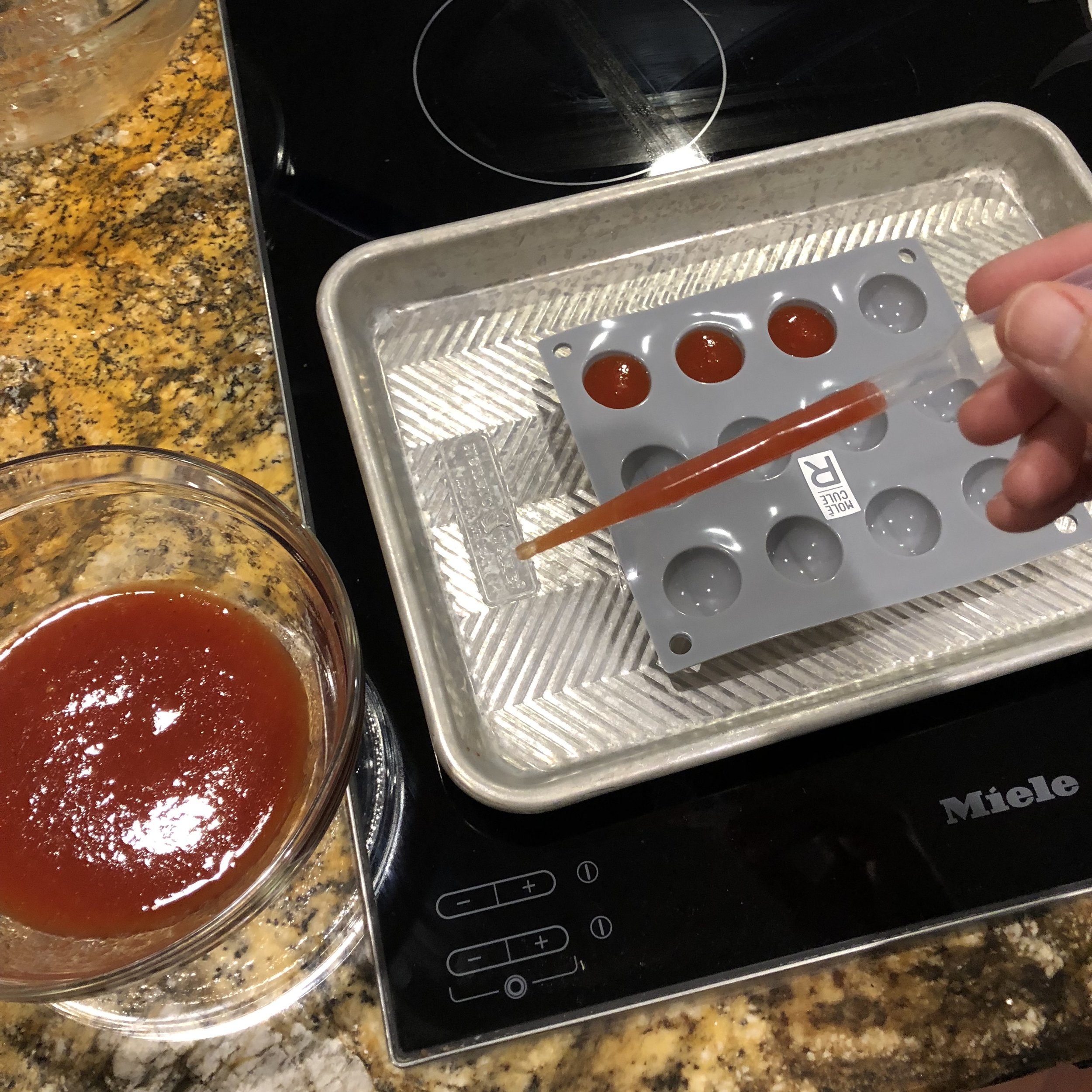
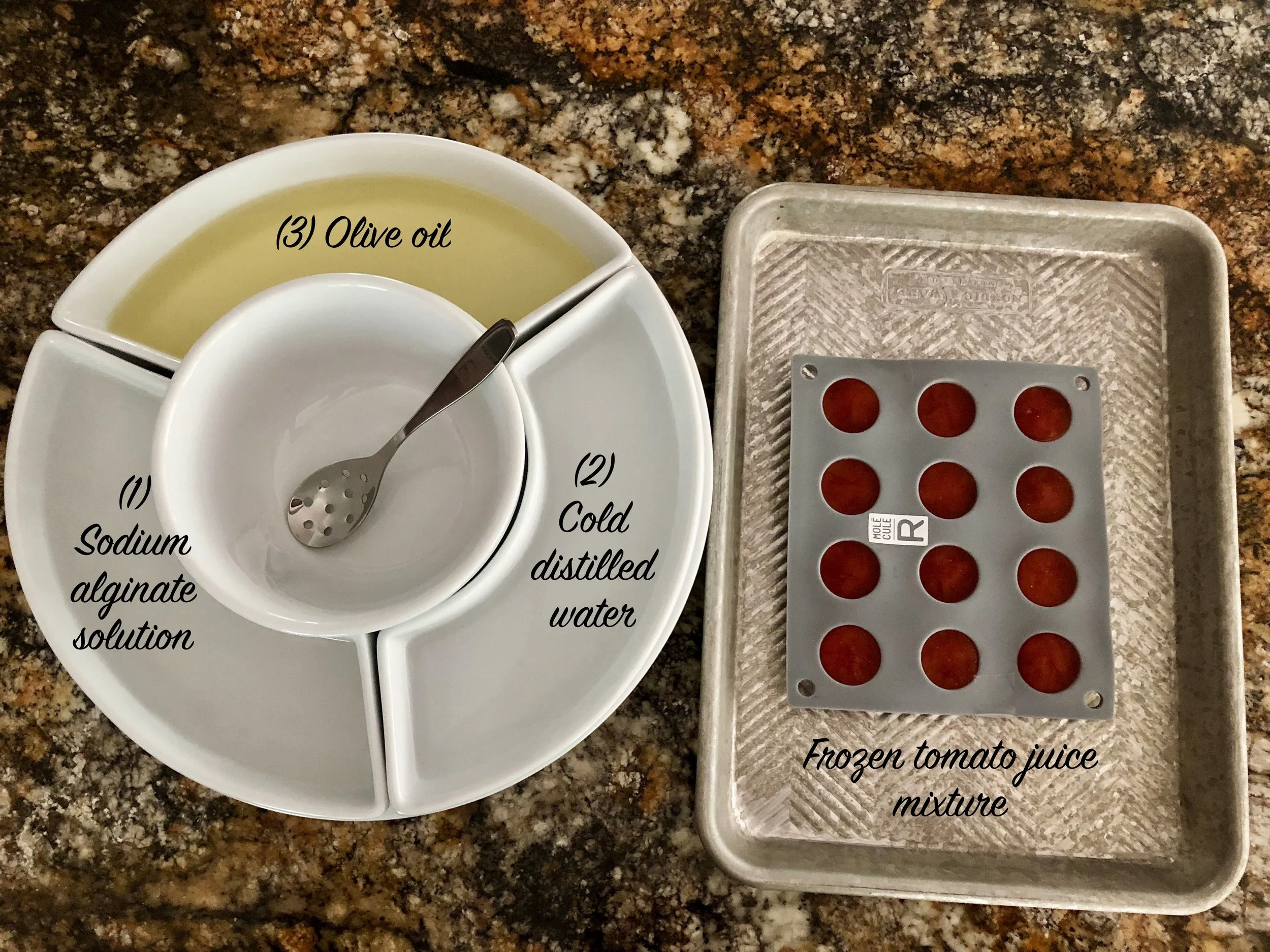
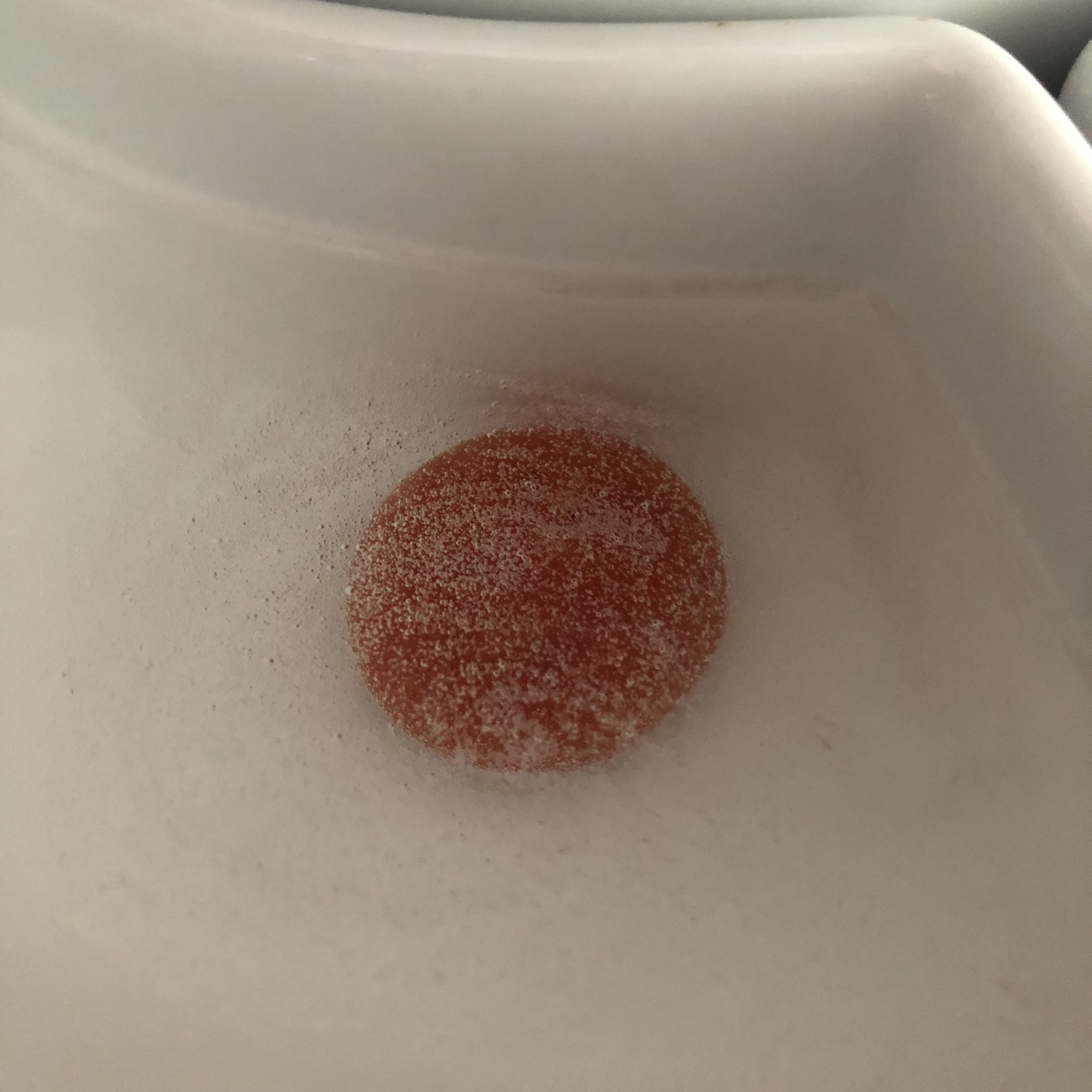
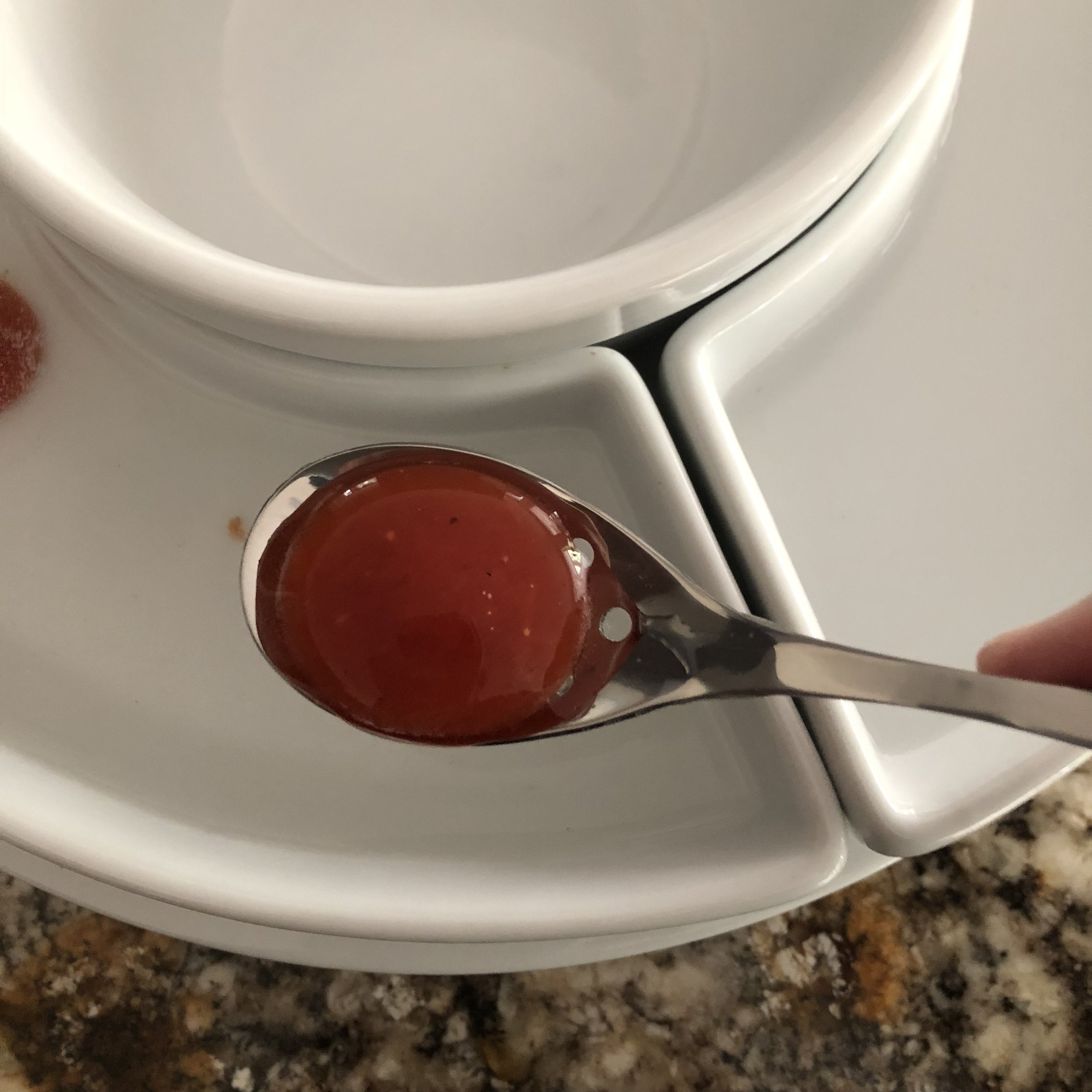
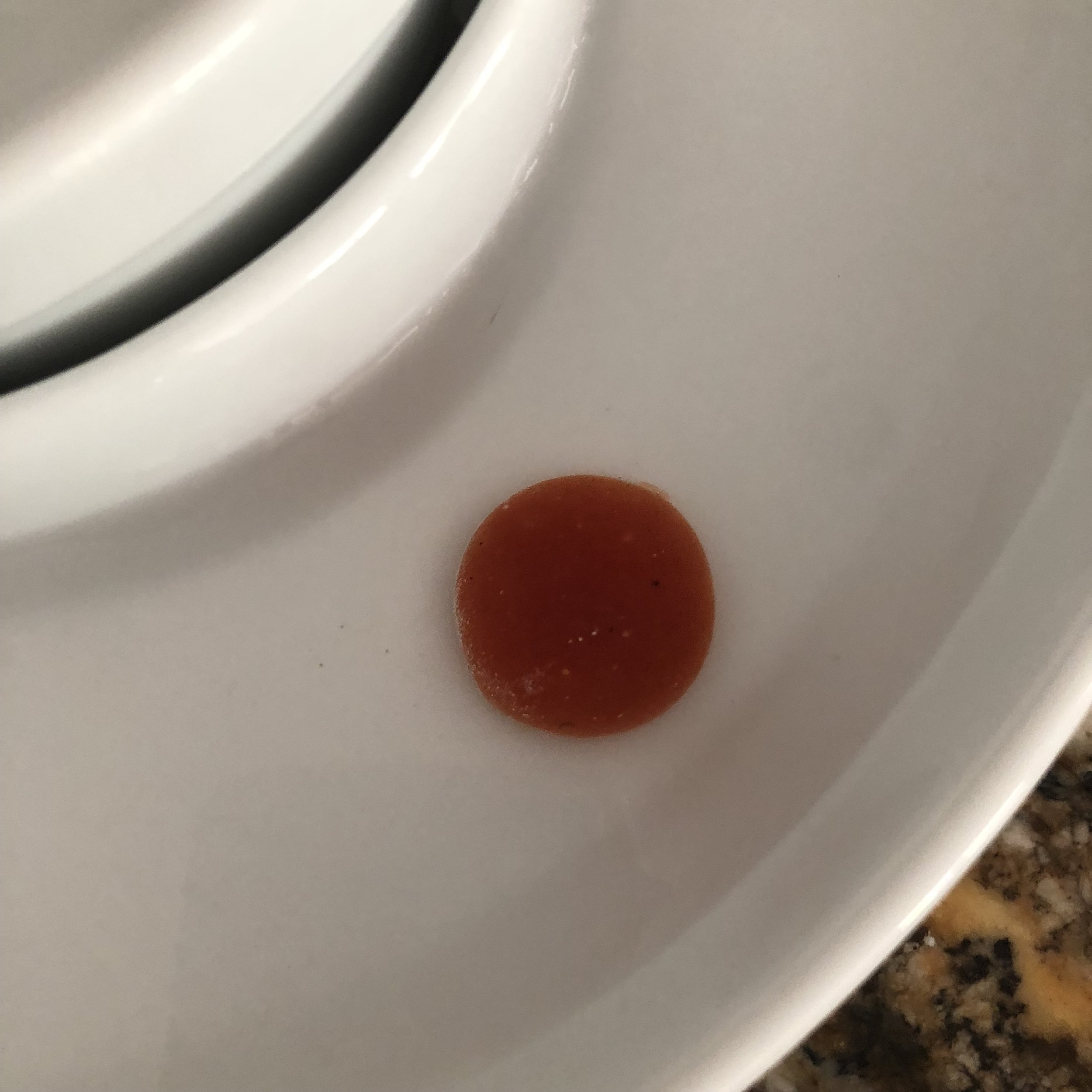
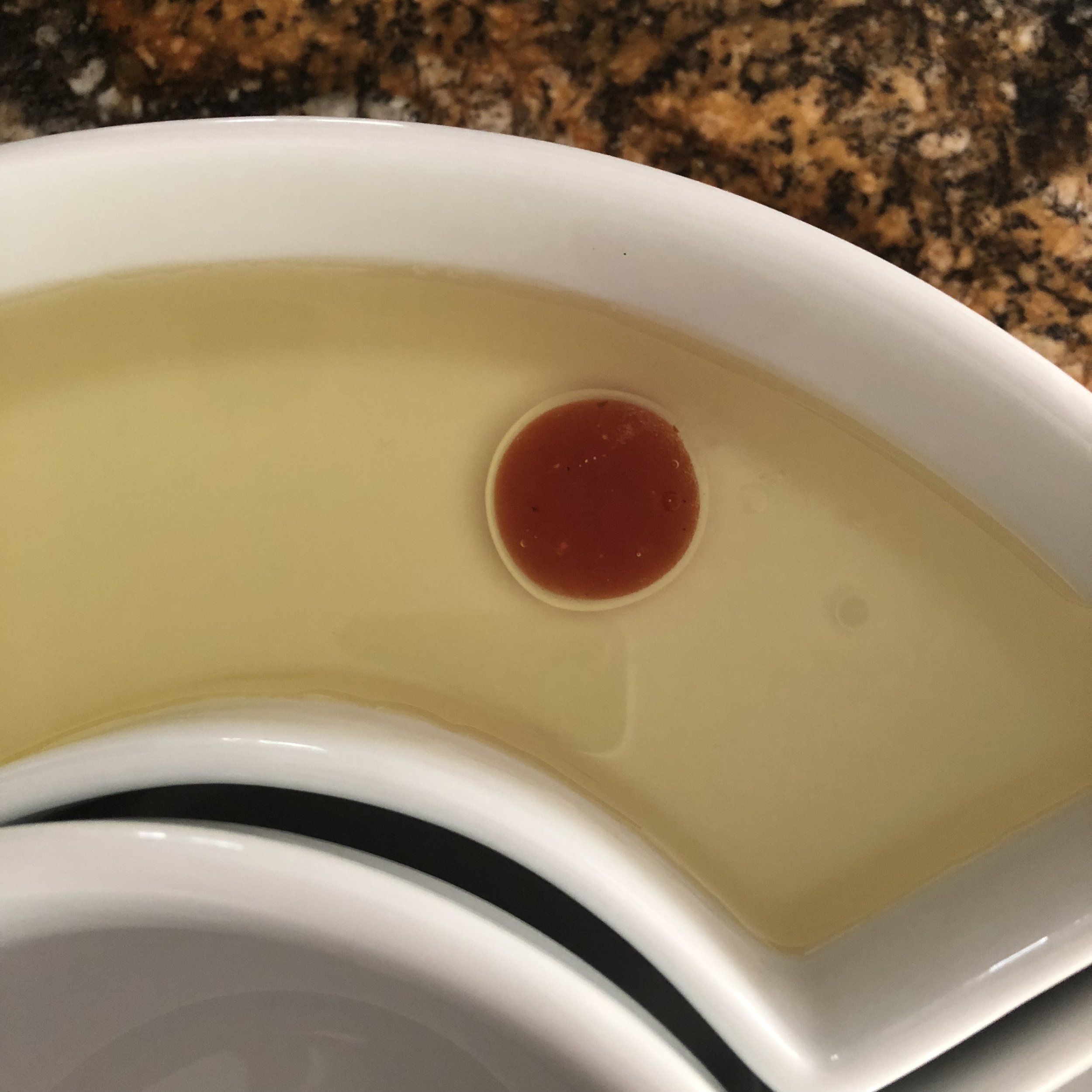
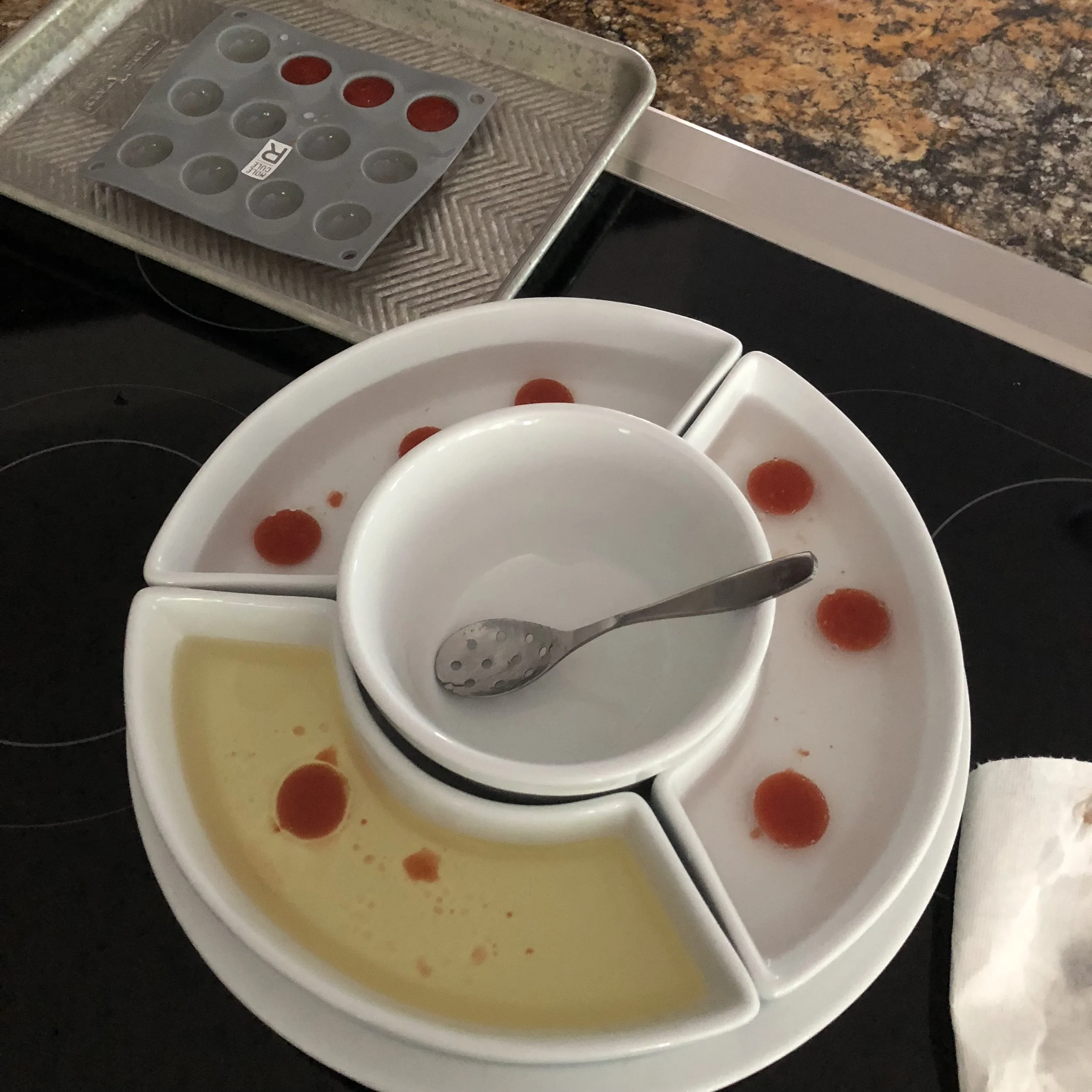
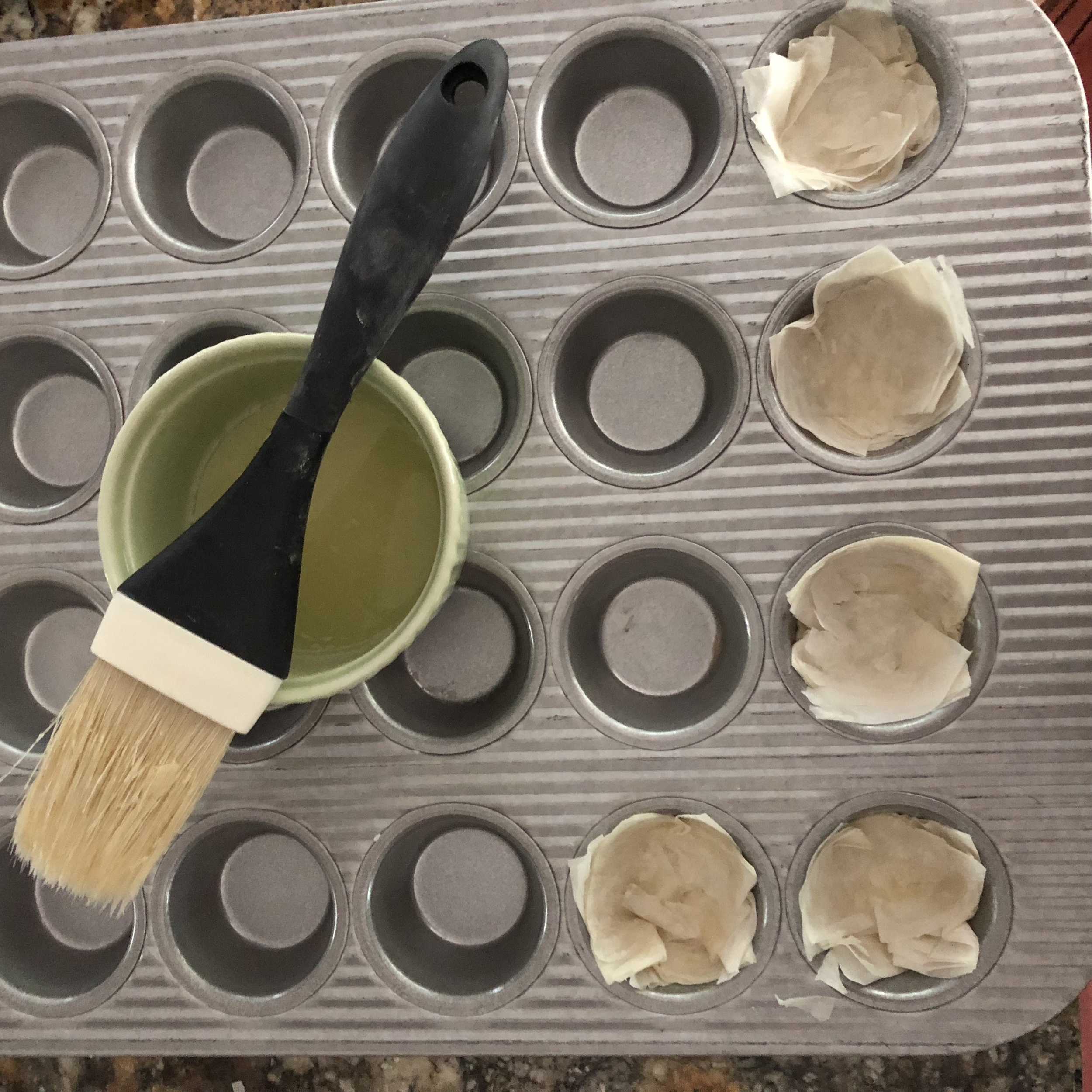
Method
1. Make the tomato juice mixture and freeze
Combine the tomato, celery, onion in a medium saucepan and cook until soupy and veggies are soft, about 30 minutes. Let cool for about 15 minutes.
Run the mixture through a food mill. Stir in the calcium lactate (I used 1 tsp) and use a pipette to distribute the tomato juice into the silicone mold (fill to the top). Then freeze for at least 2 hours or overnight.
2. Mix up the sodium alginate solution
In a blender, combine 2 cups of distilled water and 2g of sodium alginate and blend for about 10 seconds. Pour into a flat-bottomed container and let stand for 30 minutes to let all the air bubbles escape. You could also use an immersion blender for this step if you prefer.
Fill another flat-bottomed container with cold distilled water, and yet another container with the final holding liquid for the spheres. This liquid can be leftover tomato juice, olive oil, or any non-acidic liquid (interestingly, the gel membrane can take on the flavor of the storage liquid); I used olive oil.
3. Make the fillo cups and fill with goat cheese
While you are waiting for the your sodium alginate solution to de-bubble, prepare your fillo cups. Preheat the oven to 350 degrees F. Unroll your thawed fillo dough and separate 6 sheets from the pack. Brush each sheet with melted butter and stack them. Cut the stacked sheets into roughly 2.5" by 2.5" inch squares and press them into a mini muffin tin. Bake the fillo cups for 10-15 minutes, until golden brown. Let cool in the muffin pan.
Spoon a small amount (about 3/4 to 1 teaspoon in this case) of goat cheese into the bottom of the fillo cup.
5. Spherize the tomato juice
I set up a little assembly line of the sodium alginate mixture, cold distilled water, and the final holding liquid. Remove the frozen half sphere and gently place it in the sodium alginate mixture. Do not let the spheres touch. Swish the sphere gently occasionally, and wait at least 3 minutes for the membrane to form. Use the slotted spoon to gently pick up the sphere and move it to the cold water bath. This will stop the gel membrane formation process. Gently rinse the sphere in the water, then transfer it with the slotted spoon to the holding liquid. Repeat this until all your spheres are made. If your spheres are breaking, then leave them in the sodium alginate longer so they develop a thicker membrane. Be gentle with transferring the spheres to prevent breakage.
6. Assemble
Gently transfer a sphere from the holding liquid to sit atop the goat cheese using the slotted spoon. Be careful to not let the pointy edges of the fillo break the spheres. Top with a tiny basil leaf.
7. EAT
This was an incredibly fun kitchen experiment, and I encourage you to try it as well! If you do, let me know how it goes. There will definitely be more spherification happening in my kitchen now that I've got the hang of it.

